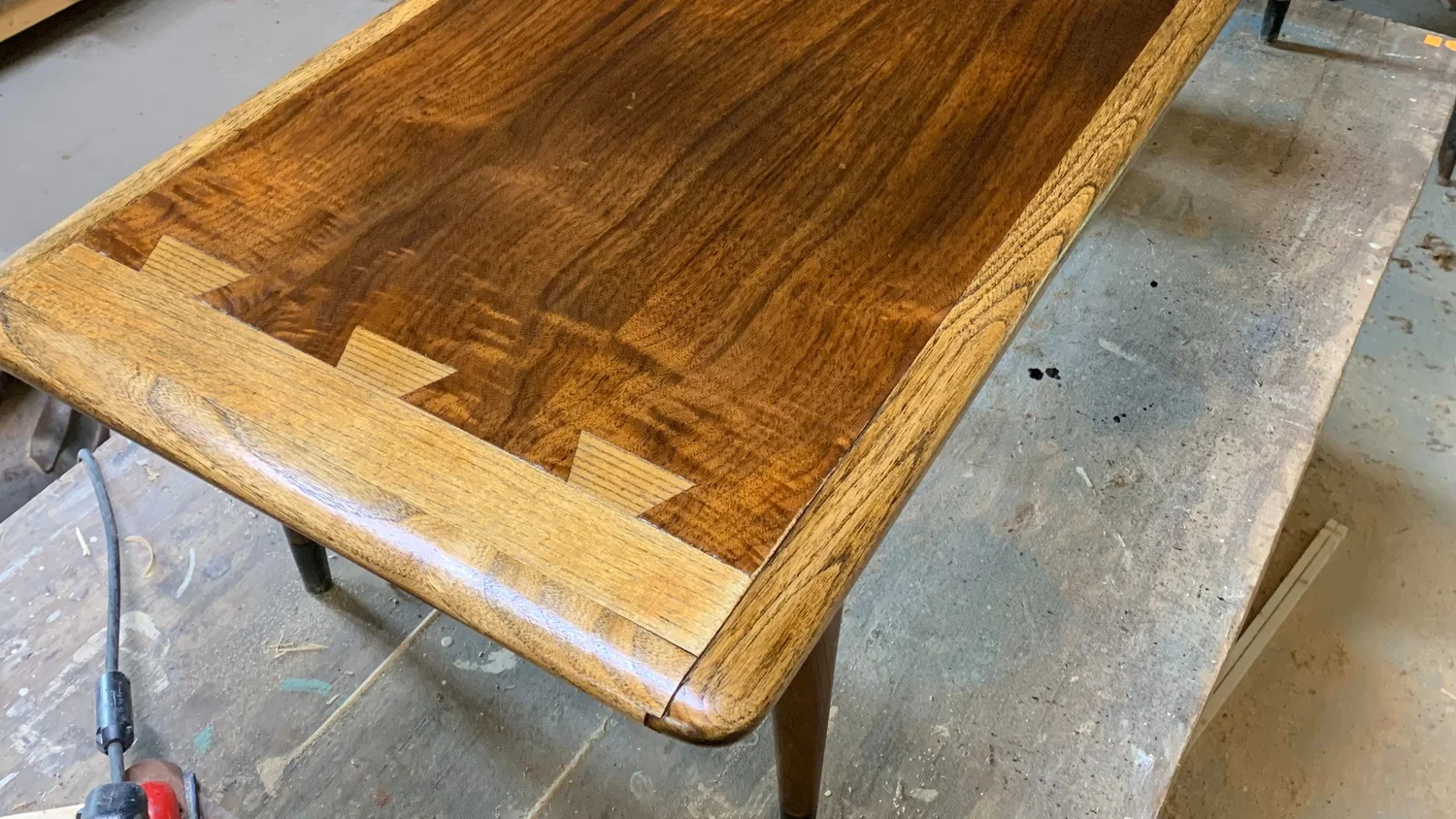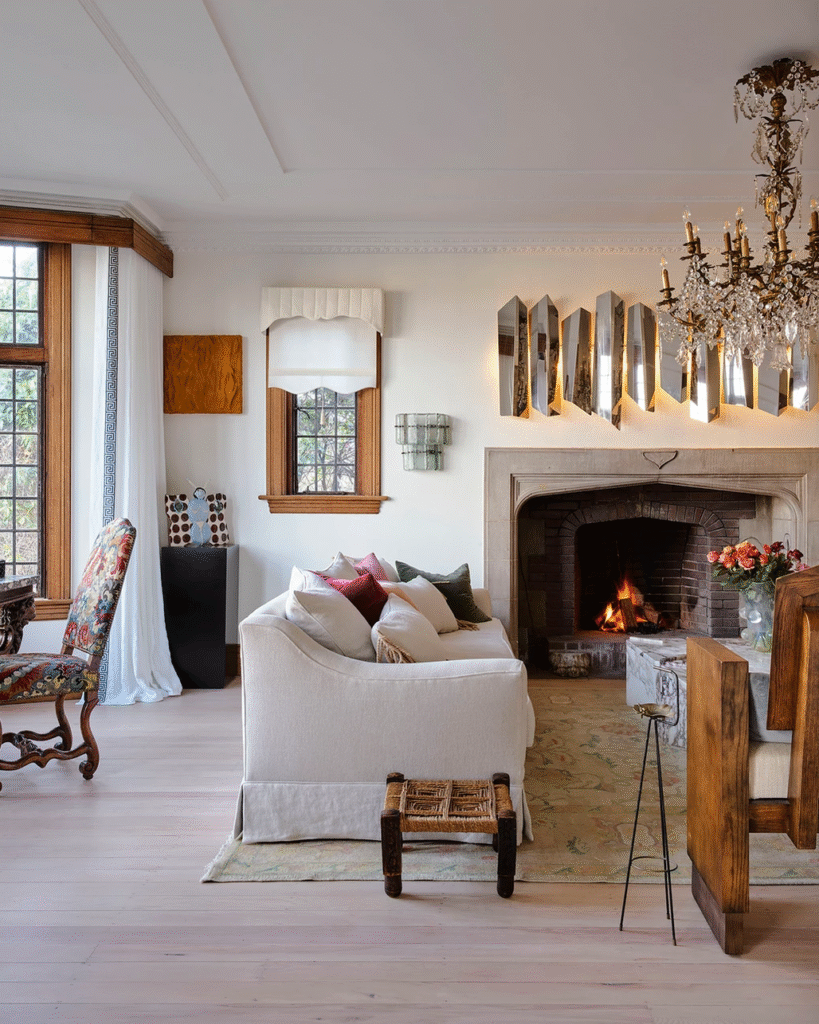You have a beautiful Mid Century Modern dining table, but over time it has lost its charm. Maybe the finish is worn, or there are scratches and dents that bother you.
Restoring your table can bring it back to life, making it the stunning centerpiece it once was. But how do you do that without damaging the delicate wood or veneer? In this guide, you’ll learn simple, step-by-step methods to carefully restore your Mid Century Modern dining table.
From stripping old finishes to choosing the right oils and stains, you’ll find everything you need to confidently bring your table back to its full glory. Ready to transform your dining space? Let’s get started!
Choosing The Right Table
Choosing the right mid century modern dining table for restoration is a key step that sets the tone for your entire project. Not every table will respond the same way to restoration techniques, so understanding what you’re working with matters. You want to pick a piece that not only matches your style but also offers a solid foundation for repair and refinishing.
Identifying Wood Types
Start by figuring out what type of wood your table is made from. Common woods in mid century pieces include teak, walnut, and rosewood, each with unique grain patterns and colors. Knowing the wood type helps you choose the right cleaning products, stains, and finishes.
For example, teak has natural oils that protect it, so it often needs oil-based finishes rather than heavy sanding or stripping. Walnut, on the other hand, can darken significantly with stain, so test a small area first. Have you ever tried restoring a table only to find the wood didn’t take the finish well? That’s why this step saves you time and frustration.
Assessing Veneer Condition
Many mid century tables use veneer rather than solid wood. Check the veneer carefully for cracks, peeling, or missing sections. Veneer damage requires gentle handling since sanding too deep can burn through the thin wood layer.
Look at the edges and corners where veneer tends to lift first. If you spot bubbling or loose spots, you’ll need special glue and clamps to fix them before refinishing. Have you noticed how some tables look flawless on top but feel fragile around the edges? That’s usually veneer wear, and it’s crucial to address it early.
Evaluating Table Structure
Beyond wood and veneer, the table’s overall structure must be solid. Check legs, joints, and any moving parts like leaves or extensions. Wobbly or loose parts will undermine your restoration and might need reinforcing or replacement.
Try moving the table gently to see if it creaks or shifts. Tight joints make your work easier and ensure the restored table lasts for years. What’s the point of a beautifully refinished surface if the table can’t stand firm during dinner parties?
Gathering Tools And Materials
Gathering the right tools and materials is the first step in restoring a Mid Century Modern dining table. Having everything prepared makes the process smooth and enjoyable. It helps avoid interruptions and ensures you treat the wood properly. Preparation also protects the table’s unique style and character throughout the restoration.
Essential Restoration Tools
Start with basic hand tools like sandpaper of various grits. Use a sanding block for even pressure. A scraper helps remove old finishes without harming the wood. Soft cloths are needed for cleaning and applying finishes. Have a small brush for detailed areas. Consider a putty knife to fill cracks or holes. A vacuum or brush clears dust after sanding. These tools keep your work precise and clean.
Selecting Finishes And Oils
Choose finishes that match the original look. Many Mid Century Modern tables use oil-based finishes or lacquer. Oils like teak or Danish oil nourish wood and enhance grain. Lacquer provides a shiny, durable surface. Pick a finish that suits your table’s wood species. Test finishes on a hidden spot first. This helps avoid surprises and achieve the best result.
Safety Gear And Workspace Setup
Wear gloves to protect your hands from chemicals and splinters. Use a mask to avoid inhaling dust or fumes. Safety glasses shield your eyes during sanding or scraping. Work in a well-ventilated area to reduce fumes. Cover your workspace with drop cloths or old newspapers. Keep tools organized to prevent accidents. A tidy, safe space speeds up restoration and keeps you comfortable.
Preparing The Table
Preparing your mid century modern dining table is the first crucial step in restoration. This phase sets the foundation for a smooth and successful project. Attention to detail helps preserve the table’s character and beauty. Take your time and work patiently.
Cleaning Surfaces
Begin by removing dust and dirt from the table’s surfaces. Use a soft cloth and mild soap mixed with water. Avoid harsh chemicals that can damage the wood. Gently wipe all areas, including legs and edges. Dry the table thoroughly before the next step.
Removing Old Finish
Old finishes like lacquer or varnish need removal to reveal fresh wood. Choose a chemical stripper designed for wood furniture. Apply it evenly following product instructions. Use a scraper gently to lift the softened finish. Take care not to gouge or scratch the wood surface.
Handling Veneer With Care
Many mid century tables feature delicate veneer surfaces. Veneer is thin and can peel or crack easily. Avoid aggressive sanding or scraping on these areas. Use fine steel wool or very light sanding only if needed. Repair loose edges with wood glue and clamps to keep the veneer intact.

Credit: www.reddit.com
Repairing Damage
Repairing damage is a key step in restoring a mid-century modern dining table. Small flaws can reduce the table’s beauty and stability. Fixing these issues carefully brings back the table’s charm and strength. This section shows how to fix common problems like damaged edges, broken leaves, and loose legs.
Fixing Edge Veneer
Edge veneer often peels or chips on older tables. Start by cleaning the damaged area gently. Use wood glue to reattach loose veneer pieces. Press down firmly with clamps or heavy books until dry. For missing veneer, cut a matching piece from scrap veneer. Attach it with glue and trim the edges carefully. Sand the repair lightly to blend it with the original surface. Finish by applying a matching stain or finish.
Repairing Table Leaves
Table leaves can crack, warp, or have loose joints. Inspect the leaf for any splits or bends. Use wood glue to fix cracks and clamp the leaf until the glue dries. Flatten warped leaves by gently applying pressure or placing weight on them. Tighten loose joints by adding wood glue or replacing old screws. Sand any rough spots to smooth the surface. Apply stain or finish to match the main table.
Stabilizing Legs And Joints
Wobbly legs and joints reduce table stability. Check each leg for looseness or damage. Remove any old glue or debris from joints. Use fresh wood glue on all loose connections and clamp them tightly. Replace missing or broken screws with new ones of the same size. Reinforce weak joints with corner braces if needed. Test the table’s stability after repairs. Sand and refinish legs if necessary to restore their look.
Sanding Techniques
Sanding is a vital step in restoring a mid century modern dining table. It removes old finishes, smooths surfaces, and prepares the wood for staining or sealing. Proper sanding techniques ensure the table looks even and fresh without damaging delicate wood or veneer layers. Learning when and how to sand can save time and protect your table’s character.
When To Sand Vs. Strip
Sanding removes thin layers of finish and smooths minor imperfections. Stripping removes thick layers of paint or varnish. Use a chemical stripper if the finish is very thick or peeling. Sand only after stripping to clean the surface. Avoid sanding through thin veneer by stripping first. For light wear, sanding alone may be enough.
Sanding Veneer Safely
Veneer is a thin wood layer glued to the table surface. Sand gently to avoid sanding through the veneer. Use fine-grit sandpaper, such as 220 grit, for veneer. Do not press hard or use coarse sandpaper. Sand with the grain to prevent scratches. Test a small hidden area first to check thickness.
Sanding For An Even Surface
Start with medium-grit sandpaper to remove old finish and smooth rough spots. Move to finer grits for a smooth finish. Sand evenly over the entire surface to avoid dips or scratches. Use a sanding block or orbital sander for flat areas. Clean dust often to check progress. Finish sanding by hand for best control.
Applying Finish
Applying the finish is a key step in restoring your Mid Century Modern dining table. It protects the wood and highlights its natural beauty. The right finish keeps the table looking great for years. This step requires care and patience to get the best results.
Choosing Between Oil And Lacquer
Oil finishes soak into the wood and deepen its color. They create a warm, natural look. Lacquer sits on the surface, forming a hard, shiny coat. It offers strong protection and a smooth finish. Consider the wood type and the look you want. Oil is good for a soft, matte feel. Lacquer works well for a glossy, modern style.
Applying Oil Finish
Start with clean, dry wood. Use a soft cloth to apply the oil evenly. Rub it in with the grain for best absorption. Let the oil soak for about 15 minutes. Wipe off any extra oil to avoid sticky spots. Apply several coats, allowing drying time between each. This builds a deep, rich finish that enhances the wood’s character.
Using Topcoats And Wax
After oiling, add a topcoat for extra durability. A clear lacquer topcoat seals the oil and protects the surface. Apply it lightly with a brush or spray. Let it dry fully before touching. Wax adds a smooth, soft shine and extra protection. Use a soft cloth to rub wax in small circles. Buff the table to a gentle glow. Topcoats and wax keep your table looking fresh and shield it from daily wear.
Maintaining Restored Tables
Maintaining a restored mid century modern dining table keeps its beauty and function for years. Proper care ensures the wood and finish stay strong and attractive. Simple habits help protect your investment and preserve its vintage charm.
Regular Cleaning Tips
Dust the table often with a soft cloth. Use a damp cloth for sticky spots, but avoid soaking the wood. Mild soap and water work well for cleaning. Wipe the surface dry immediately after cleaning. Avoid harsh chemicals that can damage the finish.
Protecting Against Damage
Use coasters and placemats to prevent water rings and heat marks. Avoid placing hot dishes directly on the wood. Keep the table out of direct sunlight to prevent fading and drying. Maintain stable humidity to avoid wood cracking or warping. Be careful when moving the table to prevent scratches and dents.
When To Reapply Finish
Check the table’s finish regularly for dullness or wear. Reapply finish if the surface looks dry or scratched. Use the same type of finish originally applied for the best result. Light sanding before refinishing helps the new coat adhere well. Follow product instructions for drying and curing times.

Credit: www.reddit.com
Cost Considerations
Restoring a mid century modern dining table involves various costs. Understanding these costs helps in planning your project better. Expenses depend on the method and condition of the table.
Knowing what to expect can prevent surprises and keep your budget on track. Let’s explore key cost factors for your restoration.
Diy Vs. Professional Refinishing
Doing it yourself saves labor costs but requires time and skill. You must buy tools and materials upfront. Mistakes can cause damage, adding extra expense.
Hiring a professional costs more but offers expertise and quality results. Professionals handle delicate veneers carefully. Their work saves time and reduces risk of errors.
Compare prices and skills before deciding. Choose the option that fits your budget and confidence level.
Estimating Material Costs
Materials include sandpaper, stains, finishes, and brushes. High-quality products last longer and improve appearance. Veneer repair kits or wood fillers may be needed.
Costs vary based on table size and finish type. Simple oil or wax finishes cost less than lacquer or polyurethane. Plan for small extras like tack cloths and gloves.
Buy only what you need to avoid waste. Check local stores and online for best prices.
Budgeting For Unexpected Repairs
Old tables often hide issues like loose joints or wood damage. These repairs can increase costs and time. Set aside 10-20% of your budget for surprises.
Inspect your table closely before starting. Look under the table and inside drawers. Early detection helps avoid costly problems later.
Reserve money for tools or professional help if repairs are complex. A flexible budget keeps your project stress-free.
Common Mistakes To Avoid
Restoring a mid-century modern dining table requires care and patience. Avoiding common mistakes helps protect the table’s original beauty. Many restoration projects fail due to simple errors that damage the wood or finish. Knowing what to avoid saves time and money.
Over-sanding Veneer
Veneer is a thin layer of wood covering the table surface. Sanding too much can wear through this layer. Once the veneer is damaged, it is hard to fix. Use fine grit sandpaper and apply gentle pressure. Always sand with the grain to avoid scratches. Test a small area before sanding the entire surface.
Using Incorrect Finishes
Choosing the wrong finish can ruin the table’s look. Mid-century tables often have lacquer or oil finishes. Applying a thick, glossy finish may hide the wood’s natural beauty. Use finishes designed for vintage wood furniture. Oil finishes enhance grain, while lacquer provides a smooth, protective coat. Read product labels carefully and follow instructions.
Rushing The Restoration Process
Restoration takes time and patience. Rushing leads to uneven finishes and missed details. Allow each coat of finish to dry fully before adding another. Take breaks to check your work under good light. Plan your steps and work slowly. This approach ensures a clean, lasting restoration that respects the table’s history.

Credit: www.reddit.com
Frequently Asked Questions
How Much Does It Cost To Have A Dining Room Table Refinished?
Refinishing a dining room table typically costs between $400 and $700. Prices vary by table size and condition.
Should I Sand Or Strip My Dining Table?
Strip your dining table first to remove old finish, then lightly sand to smooth without damaging veneer.
Can You Sand Mid-century Furniture?
Yes, you can sand mid-century furniture carefully. Avoid sanding veneer too deeply to prevent damage. Use proper tools and light pressure.
What Finish Was Used On Mid-century Furniture?
Mid-century furniture commonly featured colored lacquer finishes for durability and shine. High-end pieces often used oil finishes to enhance wood grain. Teak, walnut, and rosewood responded well to these finishes, preserving the natural beauty and style typical of the era’s design.
Conclusion
Restoring a mid-century modern dining table brings new life to old wood. Careful sanding and choosing the right finish protect the table’s beauty. Use gentle techniques to avoid damaging veneer surfaces. Take your time with each step for the best results.
This process preserves the table’s style and history. Enjoy a refreshed piece that fits modern homes perfectly. Restoration is rewarding and adds charm to your dining space. Keep tools and materials ready before starting your project. Small efforts create lasting value and enhance your furniture’s look.







